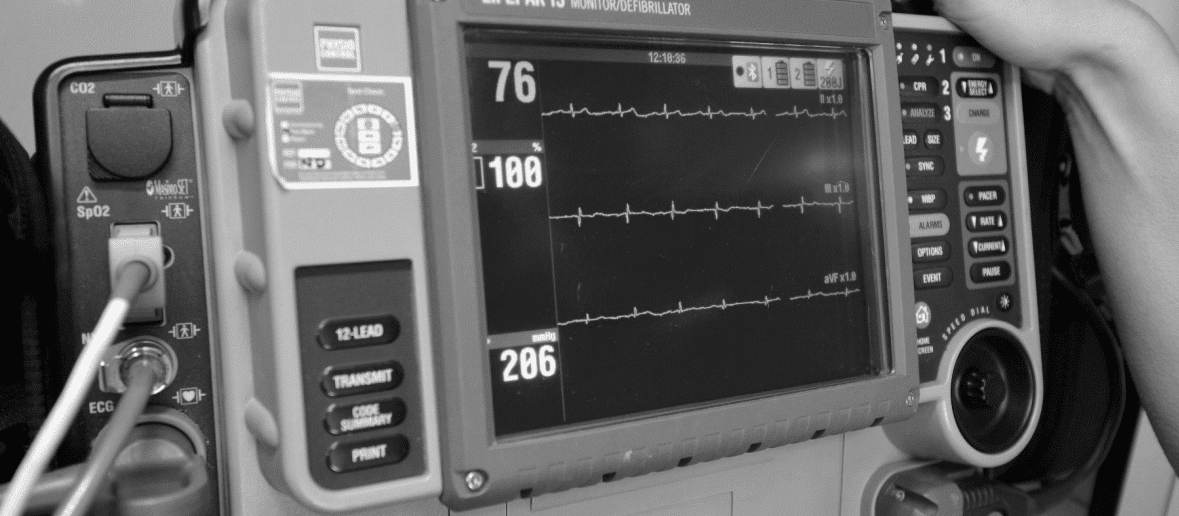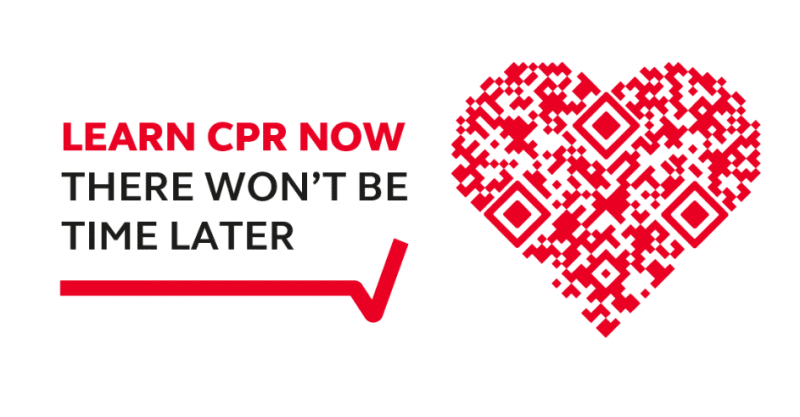
With more than three-quarters of all resuscitations attempts by South East Coast Ambulance Service (SECAmb) crews taking place in the home, this February Heart Month, people are being asked if they would be willing and able to perform CPR on a loved one.
The revealing statistic comes from a new report on out-of-hospital cardiac arrests (OHCA) published by SECAmb. The report, covering April 2021 to March 2022, also shows that SECAmb responded to 8,005 patients who had suffered a cardiac arrest and that it was viable to commence resuscitation of 2,788 patients.
With the high chance of a cardiac arrest taking place in the home, SECAmb is urging the public to learn cardiopulmonary resuscitation, (CPR), as part of overall efforts to improve survival rates.
Of the attempted resuscitations, a ‘Return of Spontaneous Circulation’ or ROSC was maintained to hospital 26 per cent of the time, while 11 per cent of patients (299 people) were alive 30 days after their cardiac arrest.
It is the first time SECAmb has recorded an overall survival rate in double figures. Both statistics show a continued increase on previous years and the survival figure exceeds the national average by 2 per cent.
SECAmb Consultant Paramedic, Dan Cody, said: “We’re pleased our report shows some improvements and we’re extremely proud of the efforts of our staff and volunteers, alongside some amazing examples of bystander CPR from members of the public. We recognise, however, that survival rates continue to fall well short of the highest international rates of 25 per cent, as seen in Norway.
“Bystanders play a vital role in giving cardiac arrest patients the best chance of survival. With our report showing that more than three quarters of resuscitation attempts we were involved in took place at a private residence, it’s clear that if anyone needs to perform CPR, it’s highly likely to be on someone they know. We also know that cardiac arrests can happen anywhere - at the train station, in the shopping centre, at the football match - so we really want the public to be confident in acting quickly if they witness a collapse when they’re out and about.
“If our ROSC and survival rates are to continue to increase then a programme of continuous improvement is needed. We recognise that this must focus on a number of specific areas. These include increasing the involvement of communities through teaching CPR, increasing the availability of Community First Responders, increasing the number and use of public access defibrillators and continuing to improve the provision of professionally-delivered resuscitation by using CPR feedback both during resuscitation and as part of our debriefing process.”
The report also shows that the proportion of SECAmb non-ambulance-crew-witnessed resuscitation attempts receiving bystander CPR has been on an upward trend for every year the metric has been recorded. In 2021-22 this figure was 78 per cent, up from 66 per cent in 2017-18 and well in excess of the target of 50 per cent set by the Global Resuscitation Alliance.
The figure is strongly influenced by a key skill of the Trust’s Emergency Medical Advisors (EMAs) to swiftly coach callers to commence and continue CPR. SECAmb EMAs use the ‘no, no, go’ tool to detect cardiac arrest: if the patient is not breathing and not conscious, they should ‘go’ ahead and commence CPR instructions.
The report also reveals that that the use of Public Access Defibrillators (PADs) is increasing across the Trust’s region. Callers to 999 are alerted of the availability of a PAD if one is close by. In 2021-22, a PAD was used on 194 patients, or 8 per cent of non-ambulance-crew-witnessed resuscitation attempts, up from 6.5 per cent (151) and 5.8 per cent (133) the two previous years respectively.
Other key points in the report which is available include:
- On average, SECAmb receives approximately 670 calls for cardiac arrest each month, or close to one call every hour.
- There is a strong gender bias in patients receiving a resuscitation attempt, with men outnumbering women two to one. Men receiving a resuscitation attempt also have a slightly lower average age, with a median average of 68 years, compared to 70 for women. These average ages reflect the distribution of overall ages of SECAmb’s OHCA patients: over half are over 70, and only one in ten are under 40.
- Nearly nine out of ten OHCA treated by SECAmb are presumed medical or cardiac in origin. Other causes include asphyxia and trauma, both accounting for approximately 4 per cent of incidents.
- In line with previous years, cardiac arrests tend to increase in the winter months, with the busiest month being December.
- The peak time of day for cardiac arrest calls is between 8am and 11am, with 22% (1746) of cardiac arrest calls and 18% (490) of resuscitation attempts.
Dan Cody added: “I would encourage everyone to take the time to learn how to save a life and perform CPR. It’s never too late to learn and gain the confidence that you would know what to do.”
The report is available to download in full here: Annual-Cardiac-Arrest-Report-FINAL.pdf (secamb.nhs.uk)
February is National Heart Month. Visit the British Heart Foundation website to find out more including how to save a life – Heart Month 2023 – Learn CPR and Go Red to help us save lives – BHF
Further information is also available on the Resuscitation Council website: Home | Resuscitation Council UK
 The Resuscitation Council has created a “CPQR code” – a heart shaped QR code that directs people to a short video on how to do CPR.
The Resuscitation Council has created a “CPQR code” – a heart shaped QR code that directs people to a short video on how to do CPR.
